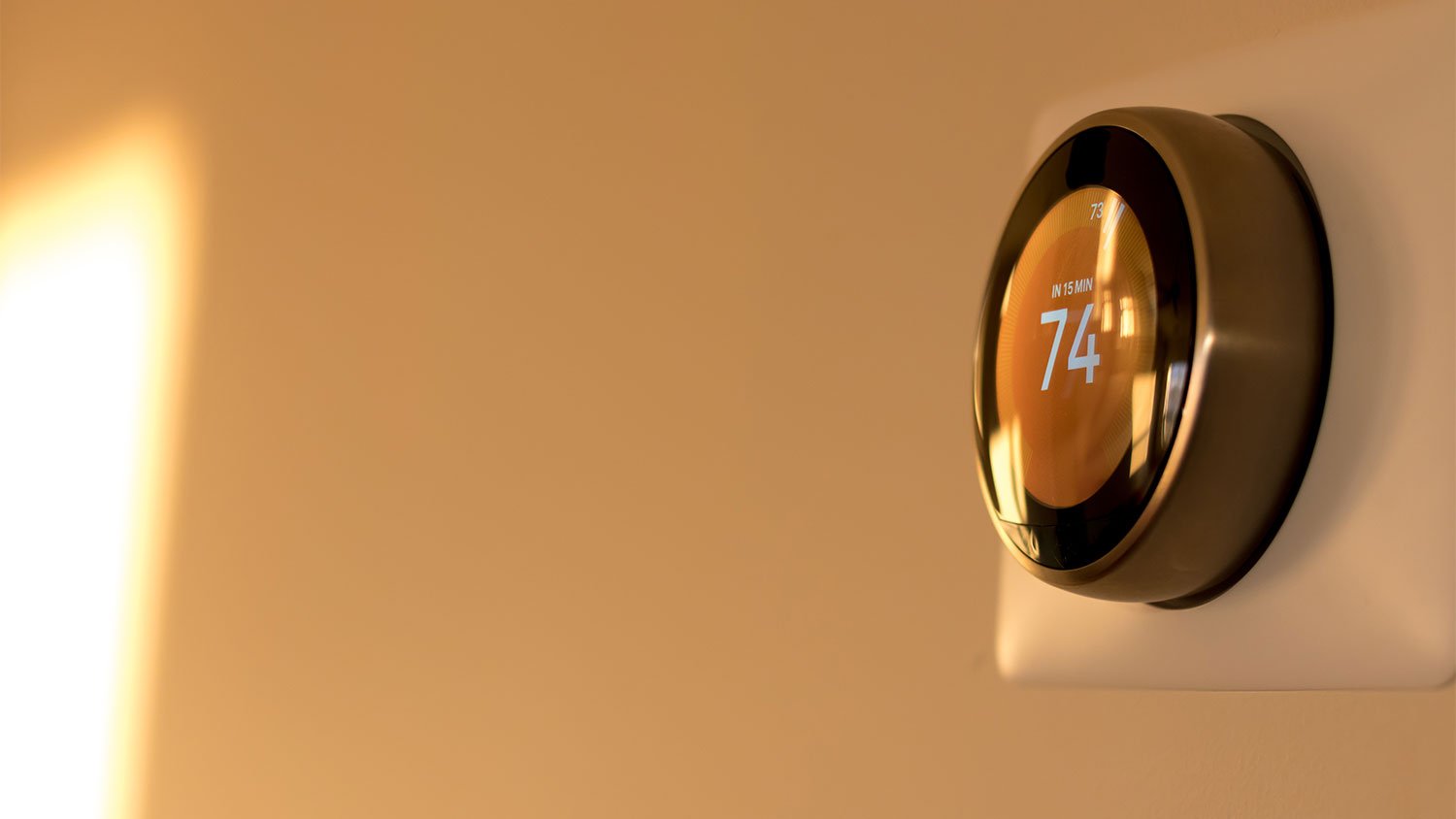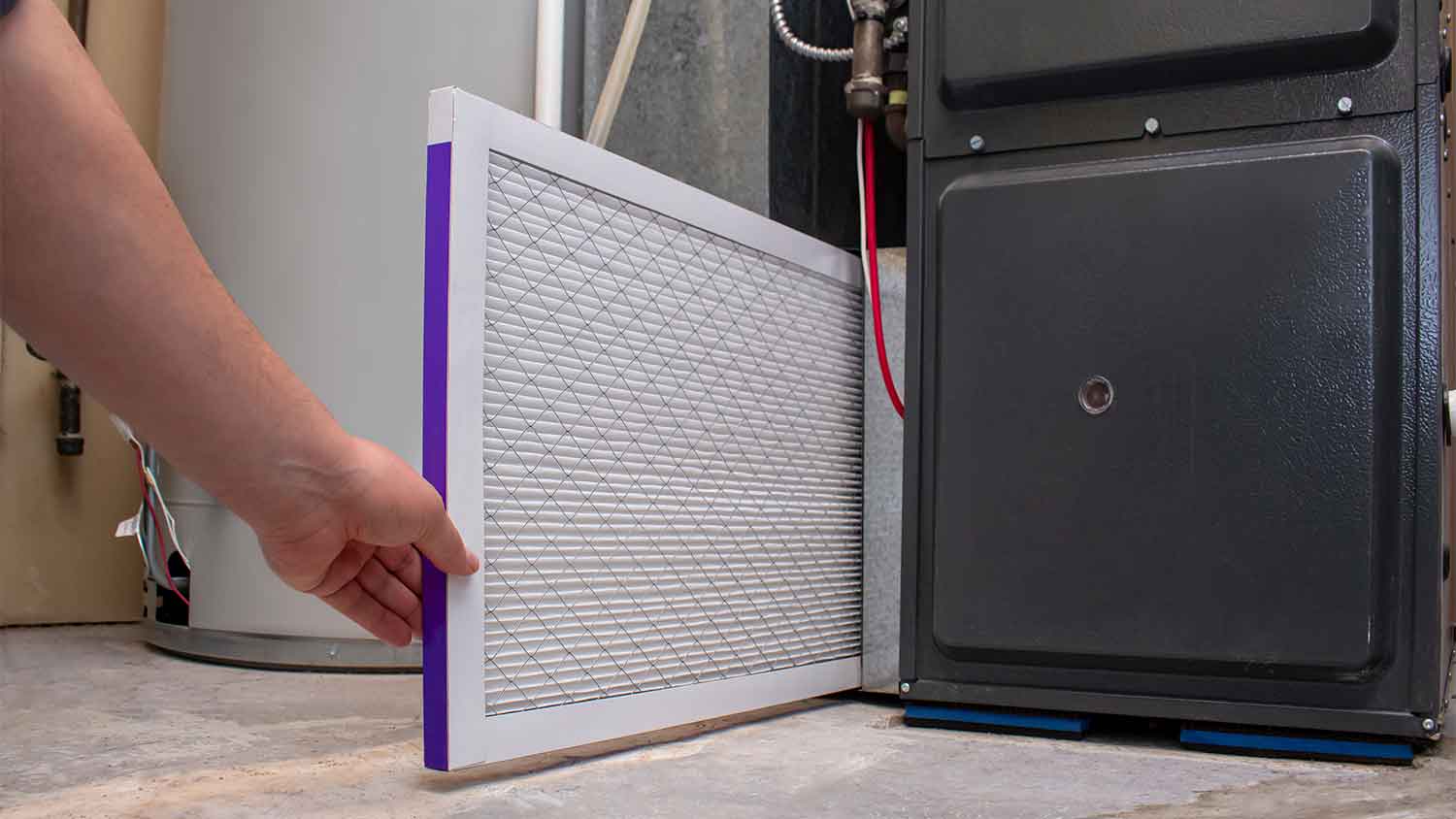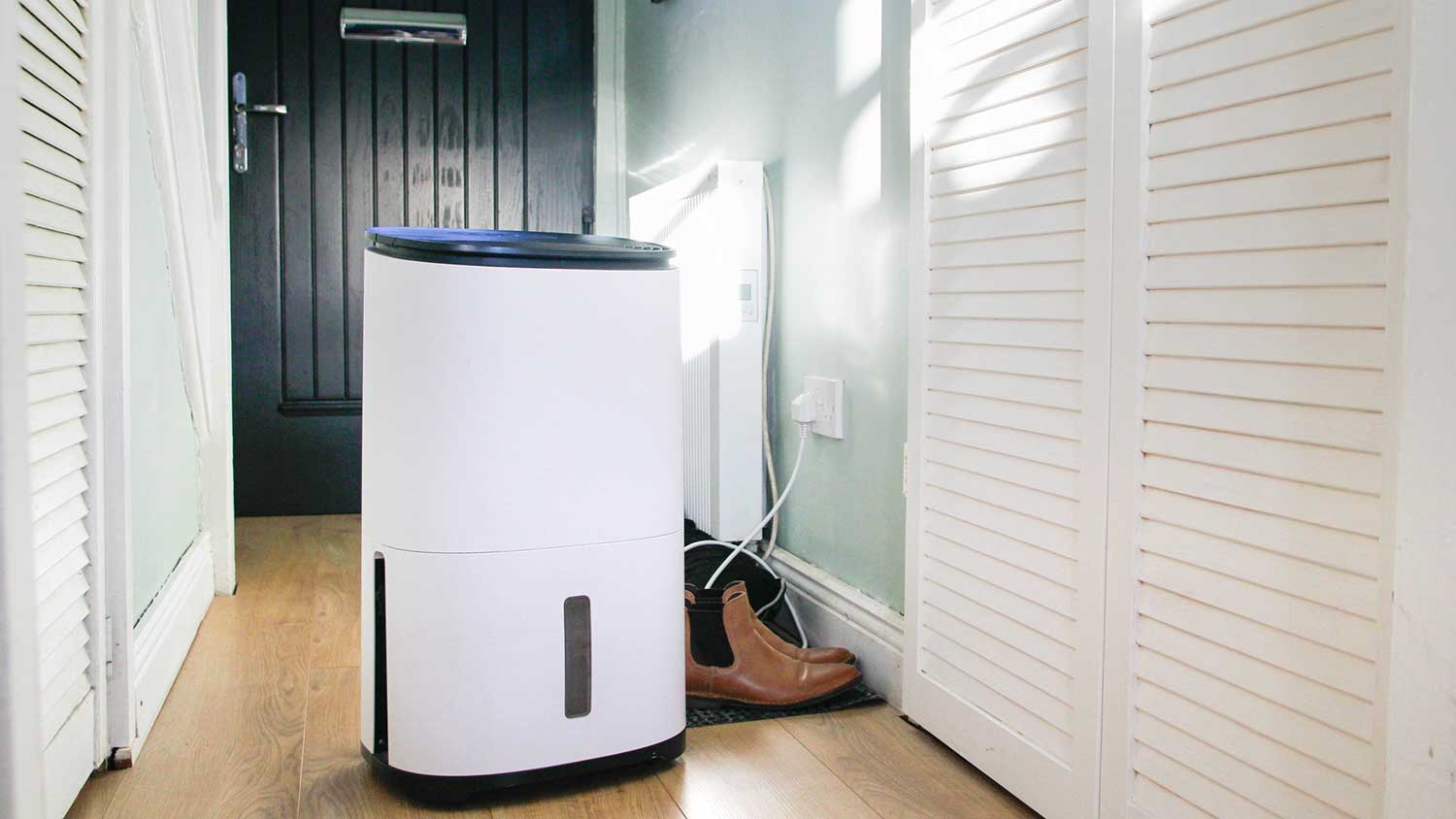How to Change a Furnace Filter in 5 Simple Steps
Breathe easier with a fresh furnace filter


When it comes to furnace maintenance, some jobs are best left to the pros. Fortunately, changing your filter isn’t one of them. In fact, this is a super-simple DIY project that you can finish in about 10 minutes. Here’s how to change a furnace filter to keep your HVAC system running efficiently.
1. Shut Off Your Furnace

Before doing any work on your furnace, you’ll need to shut it off. You can do this on your thermostat, or if you have a WiFi-enabled thermostat, you can turn it off through its mobile app.
Next, head over to your furnace, find the on/off switch, and shut it off. Not sure where your furnace is? Don’t worry—many people don’t! They’re often in basements or utility closets, so check those places first.
2. Locate the Filter
If it’s your first time diving into the depths of your home heating system, you probably don’t know what size furnace filter you need, but this is easy to figure out.
Common filter sizes include:
10 by 20 inches
14 by 20 inches
16 by 24 inches
20 by 25 inches
Your filter’s location will depend on the type of furnace you have, but in most cases, it’s inside the blower compartment. To find it, look for the main service panel near the bottom of your HVAC unit. It will be a metal or plastic component that you can slide off or pull away, and the blower motor will be inside.
If you can’t find the blower compartment or your filter isn’t in it, check your furnace’s user manual. It may have a diagram of your furnace that includes the locations of its various parts.
3. Take Out the Old Filter
Next, pull out the dirty filter. It should be easy to remove with your hands, although you might want to wear gloves if the filter is really dirty or old. If it gets stuck, use a flathead screwdriver to gently wiggle it loose.
Dirt, hair, and debris may fly around at this point, so it’s a good idea to wear an N-95 mask if you have allergies.
4. Check Which Way Air Is Flowing
On most furnace filters, there’s a fibrous side—called the air intake side—that collects dust from the outside so that it doesn’t go into the blower motor. The other side is usually mesh and keeps the fibers in place.
Many filters have arrows on the air intake side, which makes it easy to determine airflow direction. If yours doesn’t, look for the fibrous side that has dirt and debris on it, and take note of which way it was facing in your furnace.
5. Insert the New Filter

Put the dirty filter to the side and open the new one. Then, slide it into the space where the old one was, making sure that the arrows are facing the same direction that they were before, and close the service panel.
At this point, you can turn your furnace back on. Put the old filter in a plastic trash bag, tie it, and throw it in an outdoor garbage can.
Tips for Maintaining Your Furnace
Besides changing your filter regularly, you can also do other things to keep your furnace running well. Here are some furnace maintenance tips to keep in mind.
Pay attention to any strange smells: Rotten eggs, burning rubber, or melted plastic are three smells that could indicate a problem with your furnace.
Listen for odd sounds: If you hear any grinding, squealing, clicking, or banging sounds, note them and share them with your HVAC pro.
Stay up-to-date with professional maintenance: Make sure your furnace is safe and efficient by scheduling an annual appointment with a local furnace maintenance company.
Why It’s Important to Change Your Furnace Filter
As your furnace runs, the filter prevents dirt, dust, hair, and debris from entering (and potentially damaging) your HVAC system. But when your filter gets clogged, your furnace has to work harder to generate and distribute heat, which drives up your energy usage and bills. Dirty filters can also negatively impact the indoor air quality in your home. Regularly changing your filter is a simple way to keep your furnace working properly.
How Often to Change Furnace Filters
The thickness of your furnace filter dictates how often you should change it. Whether you’re wondering how often to change a 1-inch furnace filter, a 3-inch filter, or a 6-inch filter, here are the recommended timelines:
| Filter Thickness | How Often to Change |
|---|---|
| 1 to 2 inches | 1 to 3 months |
| 3 to 4 inches | 3 to 4 months |
| 5 to 6 inches | 9 to 12 months |
DIY vs. Hiring a Pro
Changing your furnace filter is a quick task that most folks can handle without professional help. Doing it yourself will usually cost between $10 and $50, while hiring an expert costs $100 to $250 per hour. The most important thing to remember is to shut off your furnace before doing any type of HVAC work.
Frequently Asked Questions
There are several reasons why your furnace filter might get dirty quickly. For example, if you run your furnace often, more air—and therefore, more contaminants—will flow through the system and clog your filter. Having pets is another reason that your filter accumulates dirt quickly. Also, thinner filters will get dirty faster than thicker ones.
While it is possible to run your furnace without a filter, there are multiple reasons why you shouldn’t. When you don’t use a filter, it puts more stress on your furnace and HVAC system, making it more likely to break down. On top of that, a filterless furnace will let dirt, dust, hair, and other contaminants fly freely through your house.
Yes, a dirty air filter can cause a higher electric bill. That’s because clogged filters make it harder for air to flow through your HVAC system, which forces it to work harder and use more energy. According to the U.S. Department of Energy, replacing dirty filters can save you between 5% and 15% in utility costs.





- Furnace Repair
- Air Conditioning Repair
- HVAC Repairs
- Furnace Installation
- Wood & Pellet Stove Repair
- Dehumidifier & Humidifier Repair
- Heat Pump Companies
- Swamp Cooler Repair
- Wood Stove Services
- HVAC Companies
- Commercial A/C Repair
- Geothermal Installation
- Air Conditioning Installation
- Boiler Repair
- 24 Hour Furnace Repair
- Geothermal Repair
- Heat Pump Repair
- Humidifier Installation
- Thermostat Repair
- Thermostat Installation
- Nest Installation
- Heating & Cooling
- Heating Repair
- Furnace Cleaning
- Furnace Tune-Up
- HVAC Technicians
- Subcontractors
- Furnace Maintenance
- Plumbing & Heating Companies
- Wood Stove Inspection
- Mini Split Installation
- Wall Heater Repair
- Duct Installers
- Why Is My Furnace Not Blowing Hot Air? Troubleshooting 13 Common Problems
- What Size Furnace Do I Need? Your Guide to Finding the Perfect Fit
- How Does a Furnace Work? Breaking Down the Process of Gas, Oil, Electric, and Propane Heating
- Here’s How Often to Change Furnace Filters and Other HVAC Filters
- How to Bleed a Furnace in 8 Steps for More Efficient Heating
- Should I Replace the Blower Motor or Buy a New Furnace?
- Furnace Fan Guide: When to Run the Furnace Fan
- What Should You Do If Your Furnace Smells Like Gas?
- What Is a Wall Furnace? How It Works and What It Does
- 5 Types of Furnaces: Pros, Cons, and Which Is Best for Your Home










